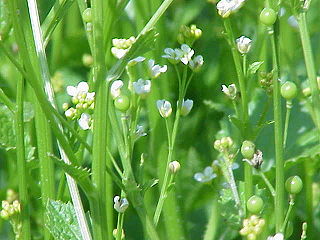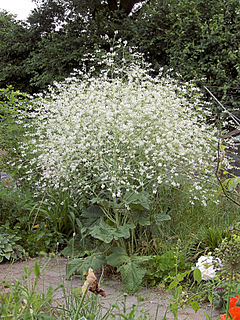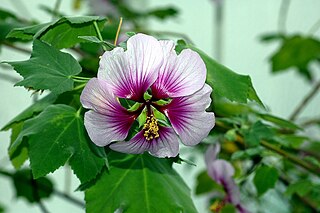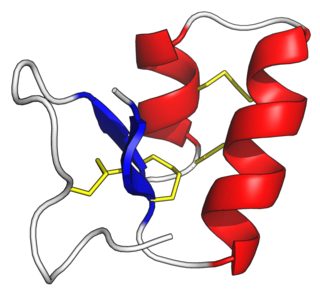Crambe is a genus of plants
Crambe may also refer to:
- Crambe, North Yorkshire
- Crambeck near Crambe in Yorkshire, famous as having been a Roman encampment
- Crambe (sponge), a genus of demosponges
- Crambe , a genus of about 20 species of annual and perennial flowering plants
- Crambe abyssinica , an oilseed crop, native to the Mediterranean
- Crambe cordifolia , syn. Crambe glabrata DC. (greater sea kale, colewort, heartleaf crambe), a species of flowering plant
- Crambe maritima (common name sea kale, seakale or crambe), a species of halophytic flowering plant in the genus Crambe

Crambe abyssinica is an annual oilseed crop of the family Brassicaceae. It is mainly cultivated due to the high levels of erucic acid that are contained in its seeds. The crambe oil is used for industrial purposes and its side products can be partly used as animal feed.

Crambe cordifolia, syn. Crambe glabrata DC. is a species of flowering plant in the family Brassicaceae, native to the Caucasus. Growing to 2.5 m (8 ft) tall by 1.5 m (5 ft) broad, it is a substantial clump-forming herbaceous perennial with kidney-shaped dark green leaves, 35 cm (14 in) or more in length, which die down in mid- to late summer. It is cultivated in gardens for its broad crinkled foliage and spectacular multi-branched inflorescences of many small fragrant white, cruciform (cross-shaped) flowers, reaching up to 2 metres high and appearing in early summer. Under droughty conditions the foliage depreciates. The plant is tap-rooted and resents disturbance.

Crambe maritima is a species of halophytic flowering plant in the genus Crambe of the family Brassicaceae (Cruciferae), that grows wild along the coasts of Europe, from the North Atlantic to the Black Sea.
- Crambe oil, an inedible seed oil, extracted from the seeds of the Crambe abyssinica

Crambe is a village and civil parish in the Ryedale district of North Yorkshire, England. It is near the River Derwent and 6 miles (10 km) south-west of Malton. The population as of the 2011 census was less than 100. Details are included in the civil parish of Whitwell-on-the-Hill. The village is located in the Howardian Hills Area of Outstanding Natural Beauty. The father of the renowned mathematician Karl Pearson was born in the village.

Crambeck near Crambe and Malton in Yorkshire is near the River Derwent.

Crambe is a genus of demosponges belonging to the family Crambeidae.
| This disambiguation page lists articles associated with the title Crambe. If an internal link led you here, you may wish to change the link to point directly to the intended article. |











